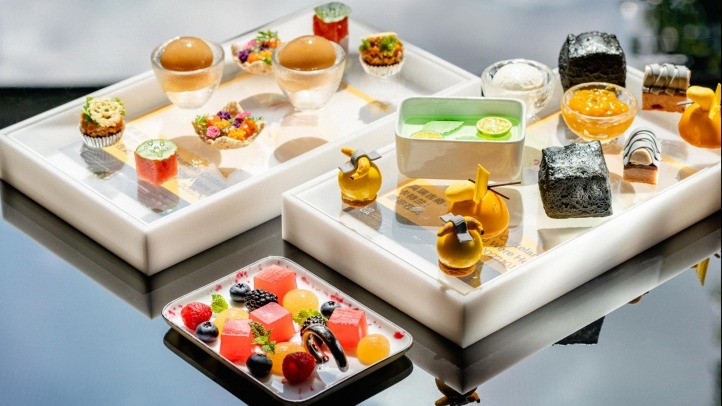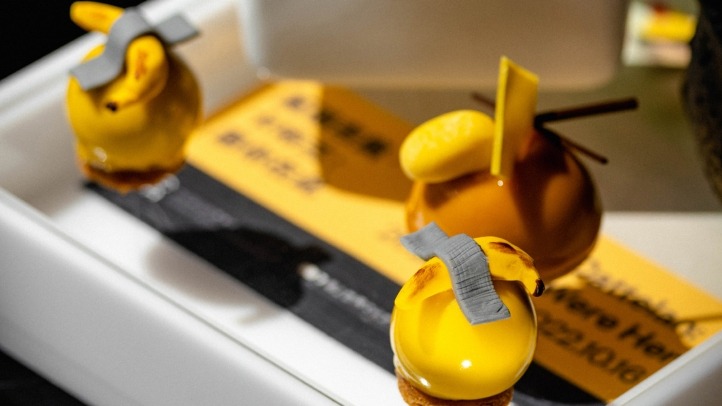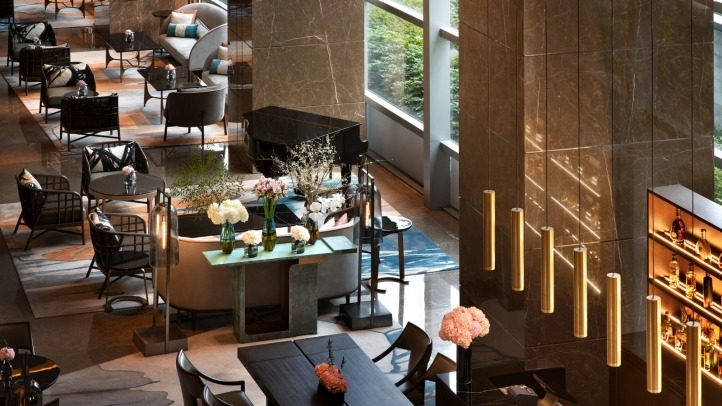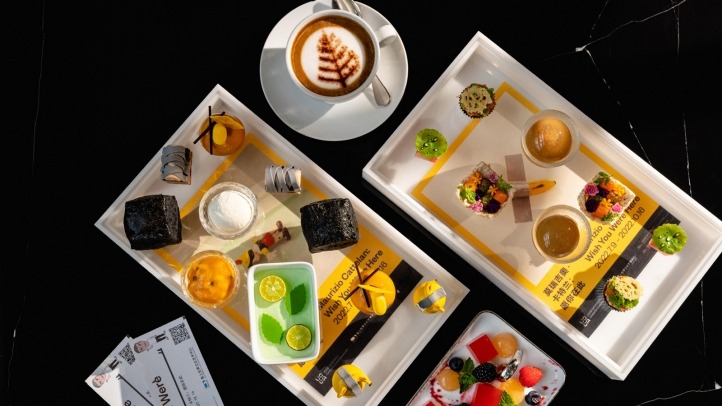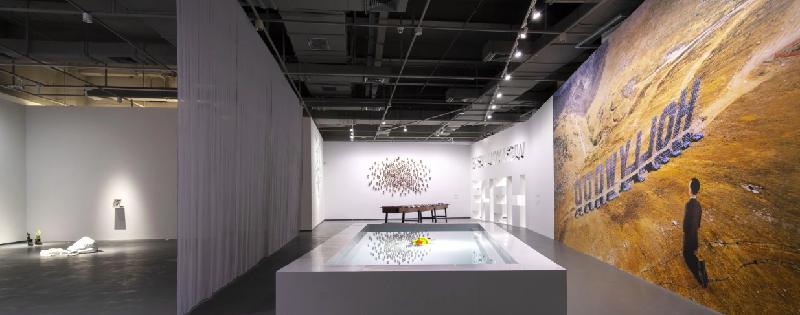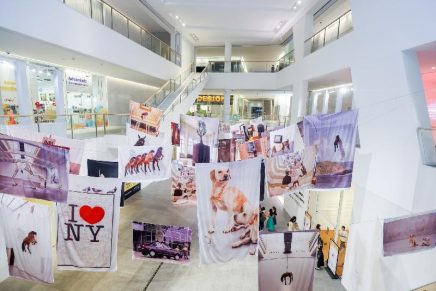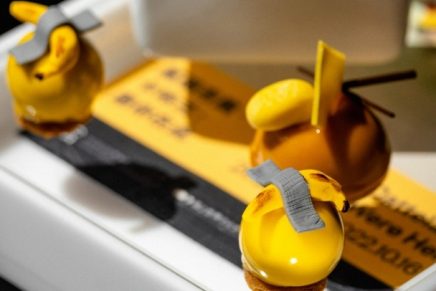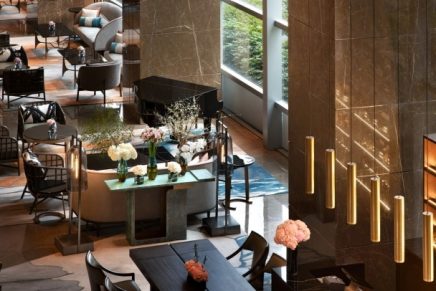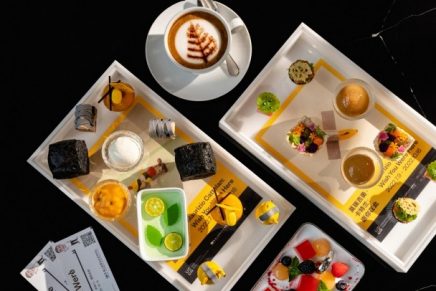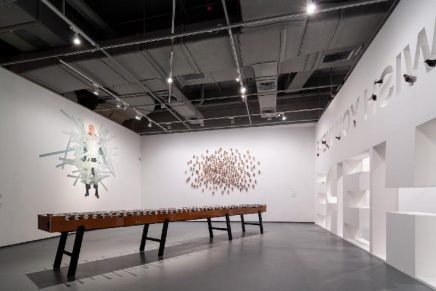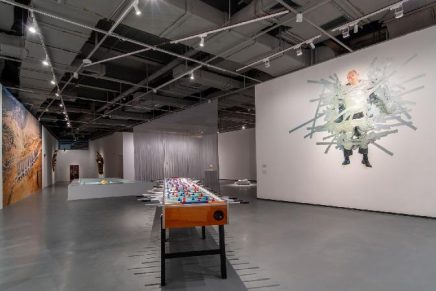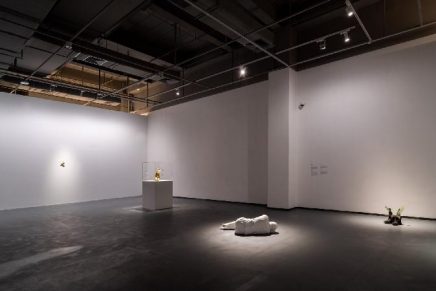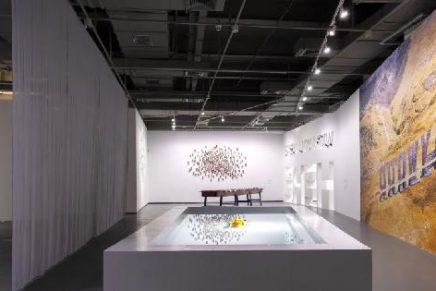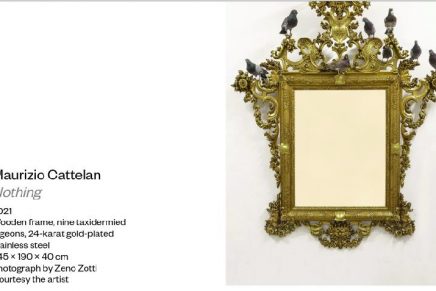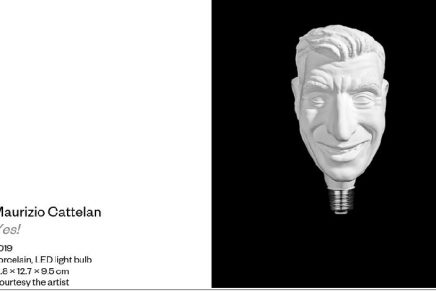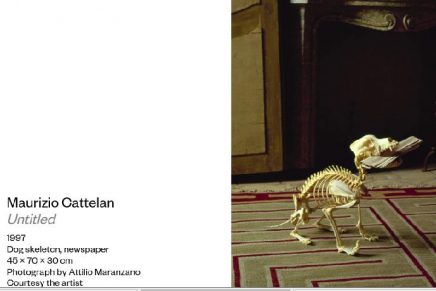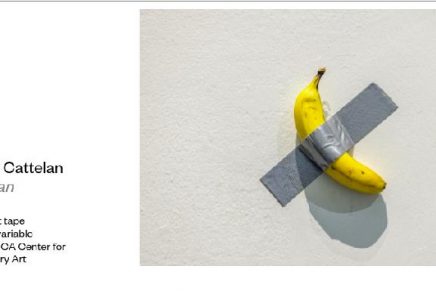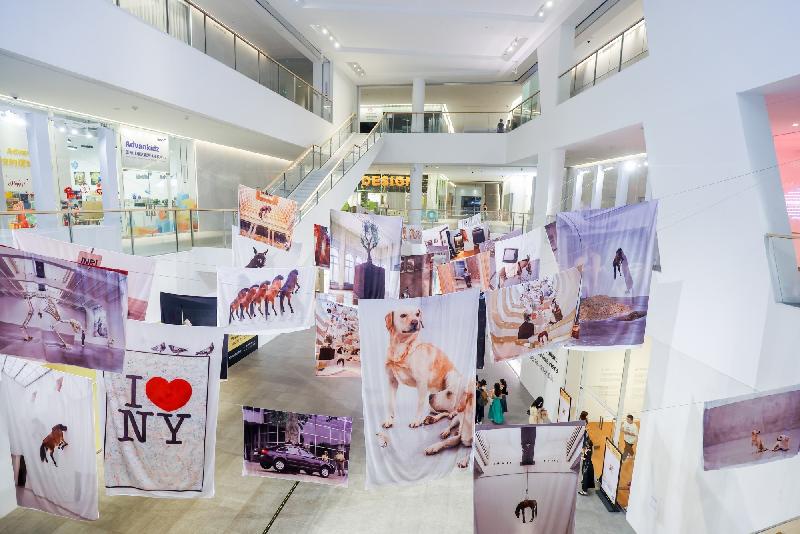
“Maurizio Cattelan: Wish You Were Here” exhibition at Sea World Culture and Arts Center (SWCAC), Shenzhen, China (2022.7.9 – 2022.10.16); @ucca.org.cn/
UCCA Center for Contemporary Art is China’s leading contemporary art institution. Committed to bringing the best in art to a wider audience, UCCA shares a wide range of exhibitions, public programs, and research initiatives to a public of more than one million visitors each year across three locations.
This season, in partnership with UCCA, China’s leading institution of contemporary art, and Shenzhen’s very own Sea World Culture and Arts Center – sees Four Seasons Hotel Shenzhen ever more attuned to the young, dynamic vibe of its thrilling city home. Elevating a stay in the luxury hotel – located in Shenzhen’s central business district of Futian – the collaboration celebrates the work of Italian artist Maurizio Cattelan, and includes a Cattelan-inspired Afternoon Tea as well as tickets to his latest exhibition.
Led by Executive Pastry Chef Mary Liu, the culinary team at Four Seasons Hotel Shenzhen has risen to the challenge and produced their own works of Cattelan-inspired art in the form of a dazzling and experimental Maurizio Cattelan: Wish You Were Here Afternoon Tea.
Highlights include a vibrant version of the elegant dessert, verrine mint and tropical fruit baba, which echoes the colours and fluid element in Cattelan’s blackly comic Daddy, Daddy (2008) – and the morello cherry cheesecake, with a bright golden icing recalling the precious metal-plated boot in Cattelan’s Untitled (2019).
Further creative bites include the banana chocolate cake and chestnut apricot cake featuring grey icing “tape” – representing the notorious banana Catalan taped to a wall with duct tape at the art fair Art Basel Miami Beach. “Fruit symphony” is a stunning exploration of form and colour – a mix of berries, jelly and molecular gastronomy in red, yellow, and black, while the bamboo charcoal scone is a striking block of edible black, served with mascarpone cream and homemade passion fruit and mango jam.
“We pride ourselves on being an on-trend location in one of the most exciting areas of an international city,” comments Nicholas Liang, General Manager at Four Seasons Hotel Shenzhen. “And this collaboration reflects that commitment to always bring our guests the best experiences. Our belief is that art is a vital component of luxury – especially in Shenzhen, the most young and dynamic city in China – and we’re thrilled to bring the two together on such a grand scale.”
Described as “one of the most popular and controversial artists working today,” Cattelan is renowned for his keen observation of society and playful exploration of human relationships. Opening this summer in Shenzhen, his latest exhibition, Maurizio Cattelan: Wish You Were Here, presents more than 20 artworks – including sculptures, murals, site-specific installations, and a performance – that touch upon a wide range of thought-provoking topics, from the ways in which love, fate and consumerism affect our lives, to questions around identity and relationships.
Hotel guests will also receive a themed room key card and a quirky art-inspired gift, with an invitation to stay tuned for in-room displays of creativity. Talk with the Hotel team to arrange a visit to Cattelan’s boundary-pushing exhibition or hotel experience.
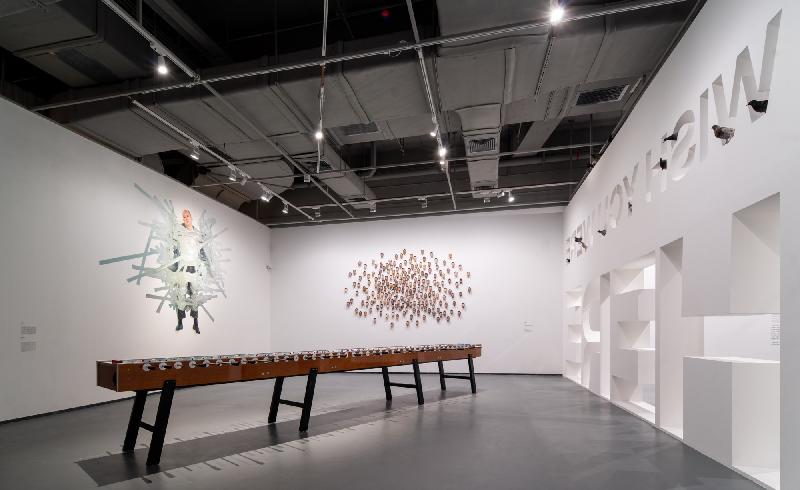
@Maurizio Cattelan: Wish You Were Here exhibition at @Sea World Culture and Arts Center (SWCAC), Shenzhen; photos @ucca.org.cn
Maurizio Cattelan: Wish You Were Here exhibition at Sea World Culture and Arts Center (SWCAC), Shenzhen
Following his first solo exhibition in China, hosted to great acclaim at UCCA Beijing, leading Italian contemporary artist Maurizio Cattelan continues his exploration of human emotions and relationships with a new exhibition in Shenzhen featuring more than 20 works, including sculptures, murals, a performance, and an interactive installation specially reimagined for the exhibition space.
Until October 10, 2022, UCCA presents “Maurizio Cattelan: Wish You Were Here” in collaboration with Shenzhen’s Sea World Culture and Arts Center.
This exhibition by artist Maurizio Cattelan (b. 1960, Padua, Italy) continues a journey through China begun by “The Last Judgment,” his first solo exhibition in the country, which opened at UCCA Beijing last year. Building off of the Beijing exhibition, “Wish You Were Here” has been specifically tailored for the new context of Shenzhen. One of the most popular and controversial contemporary artists working today, in this exhibition Cattelan presents more than 20 artworks, including sculptures, murals, and a performance. The exhibition also features site-specific installations, including a new work and a reimagining of a classic interactive installation by the artist. In Cattelan’s trademark playful and thought-provoking manner, these inspiring artworks further extend his explorations into human desire and longing. The exhibition is curated by Francesco Bonami, organized by the UCCA exhibitions team, and co-presented by UCCA and SWCAC.
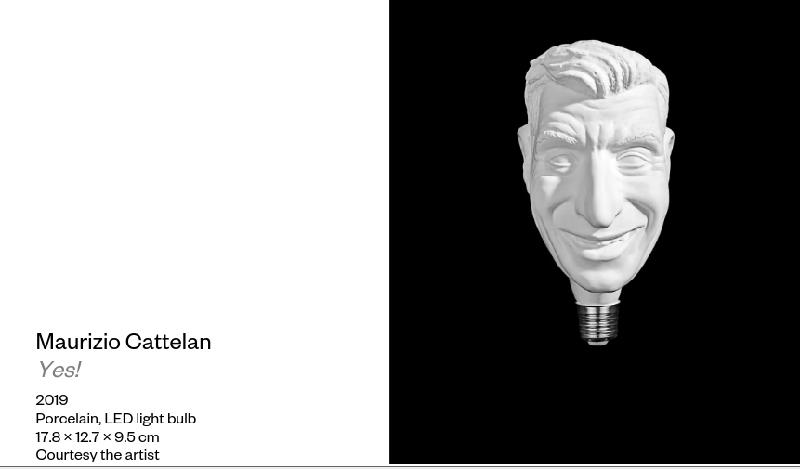
@Maurizio Cattelan: Wish You Were Here exhibition at @Sea World Culture and Arts Center (SWCAC), Shenzhen; photos @ucca.org.cn
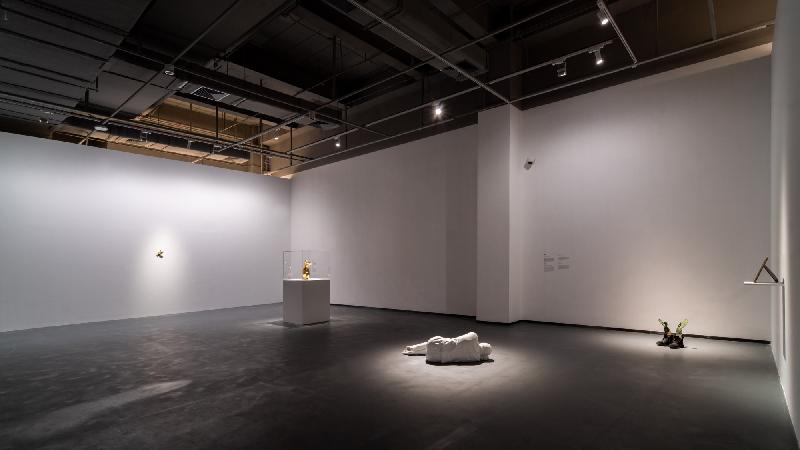
@Maurizio Cattelan: Wish You Were Here exhibition at @Sea World Culture and Arts Center (SWCAC), Shenzhen; photos @ucca.org.cn
Cattelan’s artistic practice is rooted in his own life experiences as well as his keen observation of society, specifically how we as individuals relate to others. His provocative, often mocking and prank-like artworks can be as shocking as they are heartfelt and touching. The artist is particularly adept at using the relationship between an artwork and its surrounding environment—whether its physical location or social context—to generate spectacle, stimulating interactions between art and audience, building emotional resonance, and encouraging further reflection on the part of the viewer. At its heart, Cattelan’s work is all about human connection, how we as individuals may reach out and bond with those around us. As the entire world faces trying times, and many of us are separated, unable to travel and meet as we once did, this theme has become more urgent than ever before.
With this in mind, Cattelan selected the postcard slogan “Wish You Were Here” as the exhibition title. The expression is a bittersweet one: on the hand, it is linked to wanderlust, to the human desire to experience new realities and unknown spaces. Yet these words are also a statement of loneliness. We always want to share our journeys and the sights we witness with someone else. Fittingly, artworks in the exhibition oscillate between flights of fancy and more serious self-reflection, touching upon a wide range of topics, from how fate, love, faith, and consumerism may affect our lives, to questions regarding immigrant identity and family relationships. Through his practice, Cattelan voices his concerns over humanity’s spiritual and emotional wellbeing within the tumult of the contemporary world and life in rapidly changing societies (whether the Italy of his youth or today’s China). These considerations take on added weight in Shenzhen—as China’s first special economic zone, the city is a major destination for internal migration, a symbol of the country’s Reform and Opening Up policies, and a byword for accelerated economic development. After only a few decades of existence, it is now a major economic center. In a city that changes almost every day, the artist hopes that visitors may engage in dialogue with the works, reflecting on shared memories of Shenzhen’s development to ponder how our emotional needs have evolved alongside social, economic, and cultural norms.
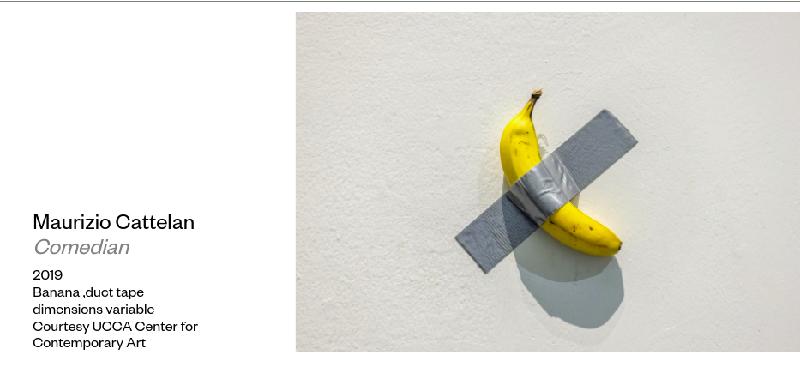
@Maurizio Cattelan: Wish You Were Here exhibition at @Sea World Culture and Arts Center (SWCAC), Shenzhen; photos @ucca.org.cn
“Wish You Were Here” invites viewers on a fascinating, often hilarious, journey, its open-ended exhibition design drawing them into the space and narratives produced by Cattelan’s artworks. The exhibition not only brings together some of the artist’s key early works, such as Lessico Familiare (1989) and the neon sign Catttelan (1994), but also presents a number of celebrated recent pieces, such as the duct-taped banana Comedian (2019), which upon its debut prompted worldwide debate on the nature and value of art. Other works on display illustrate Cattelan’s ability to work across different moods and materials, offering a broader perspective on his diverse practice. For example, in Mini-Me (1999) and Spermini (1997) he upends the contemporary art cliché of blowing objects up in size, shrinking down avatars of himself to interrogate personal identity. The taxidermied pigeons that silently observe the exhibition from Kids (2021) and two versions of Nothing (2021) take on an expansive range of meanings, while the skeleton of a dog that holds a newspaper in its mouth in Untitled (1997) speaks to Cattelan’s belief in the power of love and faithfulness. In his approach towards conceptualism, childhood memories and everyday objects are sublimated into relatable, universal experiences. Daddy, Daddy (2008) is inspired by the story of Pinocchio, and indeed its depiction of the puppet’s brightly colored body reflects a kind of lighthearted childhood innocence; yet the puppet’s positioning facedown in a pool of water speaks to darker shades of adult disillusionment. On a more upbeat note, in Untitled (2008), Cattelan grows plants out of a pair of boots, using mundane materials to create an atmosphere of magical realism, romantically imagining humanity and nature growing in harmony.
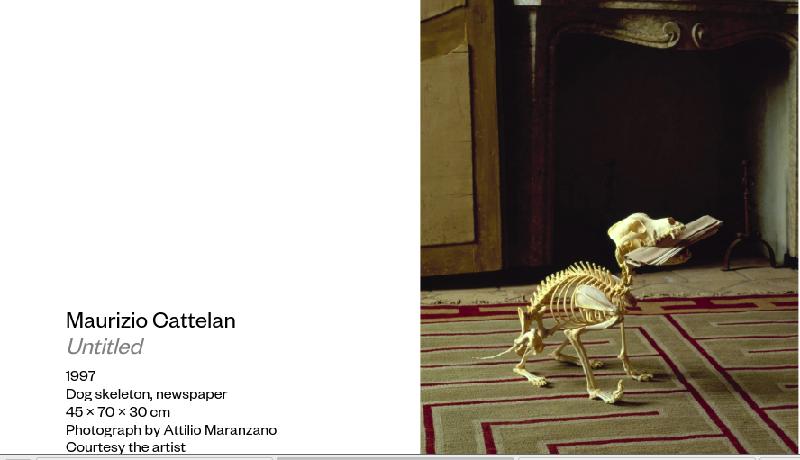
@Maurizio Cattelan: Wish You Were Here exhibition at @Sea World Culture and Arts Center (SWCAC), Shenzhen; more photos @ucca.org.cn
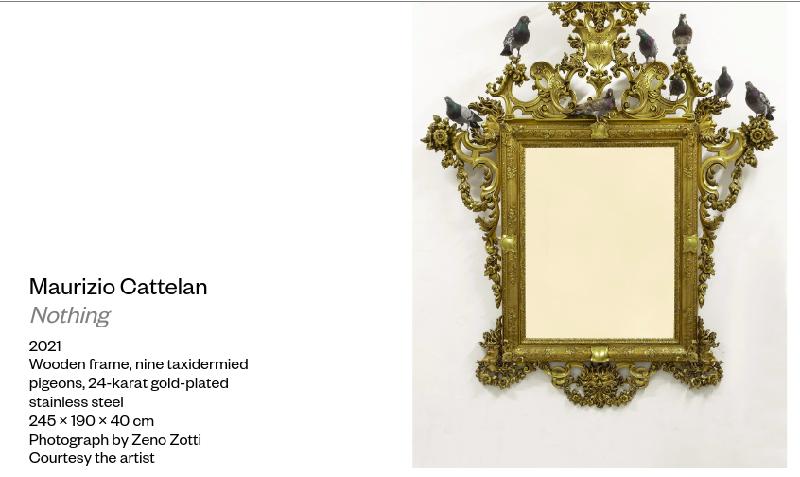
@Maurizio Cattelan: Wish You Were Here exhibition at @Sea World Culture and Arts Center (SWCAC), Shenzhen; photos @ucca.org.cn
For this exhibition the artist has also specially combined two previous works, Dynamo Secession (1997) and Yes! (2019), into a site-specific interactive installation. Visitors may pedal the stationary bicycles of Dynamo Secession, powering an electrical generator which then illuminates Yes!—a light bulb in the shape of the artist’s head. Thus Cattelan transforms what was once a jokey exposé of the art world’s inner workings (the original version saw security guards at the Vienna Secession powering lights in the museum’s basement) into an examination of his personality and its contradictions, wherein self-doubt coexists with confidence, and a desire for attention battles with a fear of the spotlight. Ciao (2022) reinterprets a performance that Cattelan first presented at the Museum of Modern Art in New York in 1998 and reprised at UCCA Beijing in 2021. In the original, a performer wore a Picasso mask as they interacted with museum visitors; here they don a caricature version of Cattelan’s head. Though still critiquing the commercialization of the art world, Cattelan now sets his sights on himself, questioning his own complicity in these processes, as well as his role and responsibility as a global representative of Italian culture.
As the follow-up to his first solo exhibition in China, Cattelan hopes that “Wish You Were Here” might help him form a special connection with audiences in Shenzhen, even across great distances in this time of separation. In his own words, “‘Wish You Were Here’ is my postcard to you. I hope it brings you joy, excitement, inspiration, and desire to connect with others through art. I hope it is a wonderful journey that can leave a mark in your memory. And I hope you are there.”
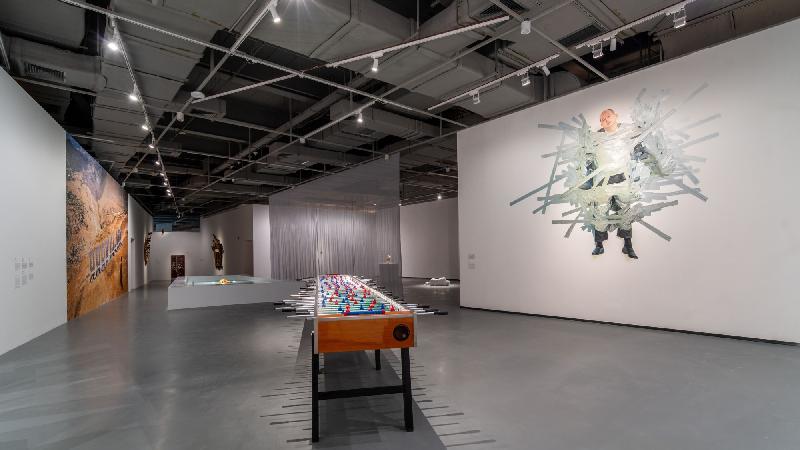
@Maurizio Cattelan: Wish You Were Here exhibition at @Sea World Culture and Arts Center (SWCAC), Shenzhen; photos @ucca.org.cn

